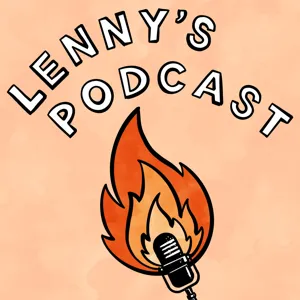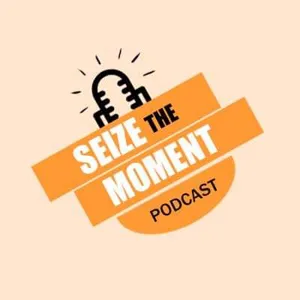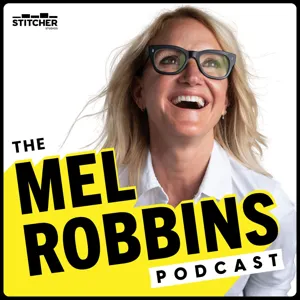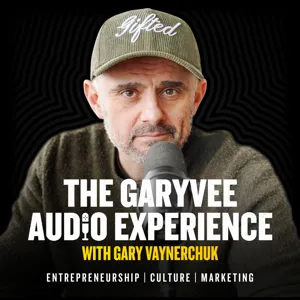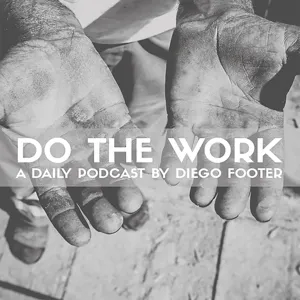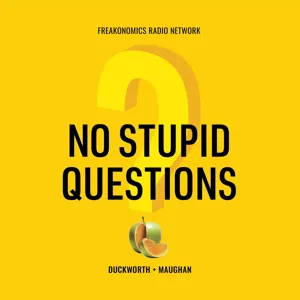Podcast Summary
Understanding and Addressing the Root Cause of Distraction: Recognizing that distractions stem from our emotional triggers and discomfort allows us to regain control of our attention, leading to increased productivity, well-being, and stronger relationships.
The root cause of distraction is our inability to deal with discomfort. While technology can be a source of distraction, the real problem lies within ourselves and our emotional triggers. Understanding these internal triggers and being aware of the discomfort we're trying to escape is key to regaining control of our attention. By recognizing that distractions are just feelings or emotions, we can equip ourselves with tools to address and overcome them. This realization empowers us to take proactive measures to stay focused and avoid getting sidetracked. By adopting research-backed strategies to combat distraction, we can significantly improve productivity, well-being, and the quality of our relationships.
Distraction vs Traction: The Power of Intentionality: By recognizing and aligning our actions with our goals and values, we can overcome distractions and enhance productivity. It's all about intent and staying focused on what matters most.
Distraction is not something that happens to us, but rather an action we take ourselves. The opposite of distraction is not focus, but traction. Traction refers to actions that align with our goals and values, moving us closer to becoming the person we want to be. On the other hand, distraction involves actions that pull us away from our intended tasks and further from our goals. The key differentiating factor between traction and distraction is intent. As long as we engage in activities with intentionality and on our own schedule, they are considered traction. Furthermore, it is important to recognize that we can be deceived by distraction without even realizing it. By understanding the true nature of distraction and focusing on intent, we can become indistractable and achieve higher levels of productivity.
Understanding and Overcoming Distractions: The Key to Regaining Control: To overcome distractions and regain control of our focus, we must understand that most distractions come from within ourselves, not external sources. Mastering internal triggers, prioritizing time for meaningful work, managing external triggers, and creating prevention strategies can help us become indistractable.
Distractions are not limited to obvious sources like social media or games. Work-related tasks can also be a form of distraction if they divert our attention from our goals and priorities. This happens when we prioritize the urgent and easy tasks over the hard and important work that moves our life and career forward. To overcome distractions, we need to understand the root causes. Only 10% of distractions come from external triggers, while the remaining 90% are internal triggers like boredom, loneliness, fatigue, uncertainty, and anxiety. To become indistractable, we must master these internal triggers, make time for traction, hack back external triggers, and prevent distraction with pacts. Following these four steps, in this order, can help anyone regain control of their focus and attention.
The Relationship between Distractions and Uncomfortable Emotions: Identifying and addressing internal triggers that lead to distractions, such as the need to escape uncomfortable emotions, is the most effective way to combat distractions.
Distractions often occur because we are trying to escape an underlying emotion or feeling of discomfort. It is common to procrastinate or engage in less important tasks when faced with something challenging or requiring deep work. This avoidance may stem from a fear of exerting effort or the laziness of starting from scratch. Many people try to solve the problem by limiting technology use or removing distractions, but this rarely works. The real issue lies in our inability to handle discomfort effectively. By identifying the internal triggers that lead to distractions, such as the need to escape a certain feeling, we can address 90% of our distractions. Understanding that distractions are primarily driven by emotions empowers us to develop tools and strategies to combat them effectively.
Overcoming Procrastination with the 10-Minute Rule: By using the 10-minute rule, you can overcome procrastination by either diving back into the task or acknowledging the discomfort of starting and waiting just 10 minutes before engaging in distractions.
When faced with the difficulty of starting or continuing a task, using the 10-minute rule can help overcome procrastination. Writing, for example, is a challenging process that can easily be avoided. However, taking out a timer and setting it for 10 minutes can make a big difference. During this time, the focus is on either getting back to the task or acknowledging and experiencing the discomfort, known as surfing the urge. Emotions are like waves that eventually subside. By telling yourself "not yet" instead of "no," you give yourself permission to wait just 10 minutes before engaging in distractions. Reminding yourself that this uncomfortable feeling is what growth feels like can also help push through those initial hurdles. The 10-minute rule is a valuable tool to overcome the resistance of starting difficult tasks.
Taking Control of Our Focus and Time: By implementing the 10-minute rule and creating a time box schedule, we can regain control of our focus, prioritize our time, and avoid distractions to make time for what truly matters.
We have the power to control our focus and not let technology hijack our brains. We often believe that distractions steal our attention, but in reality, we give it away. A helpful technique to combat this is the 10-minute rule, where we commit to focusing on a task for just 10 minutes. This not only helps us build agency and prove our ability to stay on track, but it also serves as a jump start for the day. However, it's important to note that the 10-minute rule is just one step in the process of mastering internal triggers. To truly prioritize our time and avoid distractions, we should create a time box schedule that aligns with our values and includes specific time slots for various activities, including work-related tasks and leisure activities. By turning distractions into scheduled activities, we can regain control of our focus and make time for what truly matters.
The Importance of Time Management and Prioritization: Scheduling your time according to your values and priorities is crucial for success. Take 10 minutes each week to review and adjust your schedule. Prioritize self-care, relationships, and reflective work to manage your time wisely.
Scheduling your time according to your values and priorities is crucial for personal and professional success. Taking just 10 minutes each week to review and adjust your schedule can make a significant difference. Start by identifying the person you want to become and consider how the activities in each life domain contribute to that vision. Allocate dedicated time for self-care, including rest, reading, meditation, exercise, or any other activities important to you. Prioritize your relationships by scheduling quality time with loved ones and friends. Don't let them wither away due to neglect. Additionally, distinguish between reactive work and reflective work, and make time for thoughtful, uninterrupted planning and strategizing. Remember that to-do lists lack constraints, but a well-planned calendar ensures that you prioritize effectively and make trade-offs to manage your time wisely.
Prioritizing and eliminating distractions for productivity and focus.: By blocking off dedicated deep work time and addressing internal triggers first, individuals can increase their productivity and remain focused on important tasks while avoiding distractions.
The key to productivity and focus is making time for traction and eliminating distractions. By blocking off dedicated deep work time on his calendar, Lenny was able to prioritize his important tasks and prevent others from booking over that time. This allowed him to make significant progress and avoid being constantly interrupted as a product manager. Similarly, Nir Eyal emphasizes the importance of internal triggers, scheduling time for traction, and hacking back external triggers to stay focused. Additionally, making pacts or pre-commitments, such as setting consequences or rewards for completing a task, can motivate individuals to follow through with their commitments. However, it's crucial to address these steps in the right order, starting with internal triggers and making time for traction, in order for pacts to be effective.
Rethinking Productivity: Beyond Task Completion: Productivity lies in staying committed to tasks without distractions, adhering to plans, and managing internal triggers for optimal results. Task completion times are often underestimated, so focus on commitment rather than to-do lists.
Measuring productivity based on the completion of tasks is insufficient and counterproductive. Instead, the focus should be on the ability to stay committed to a task without distraction for the intended duration. By tracking how well we adhere to our plans and minimize distractions, we gain a better understanding of our true productivity and how long tasks actually take. This eliminates the planning fallacy of underestimating task completion times. Those who measure themselves based on staying committed to tasks perform better and accomplish more compared to those who solely rely on to-do lists. Additionally, working steadily and diligently with ample lead time yields better results than last-minute cramming, so managing internal triggers is paramount for optimal productivity.
Overcoming Procrastination: A Matter of Emotional Regulation: Procrastination stems from difficulty managing uncomfortable emotions, but with proper tools and planning, it can be overcome. It is a common challenge that does not make you inherently flawed.
Procrastination is not a character flaw but rather an emotion regulation problem. It is the result of not having the tools to deal with emotional discomfort. Many people skip over addressing these uncomfortable feelings, but that is where change must begin. Planning out the time to work on tasks without distractions is crucial. And it's important to acknowledge that even the pursuit of pleasure is driven by the desire to escape discomfort. Understanding this can be empowering because it shows that procrastination is simply a feeling that can be overcome with the right tools. There is nothing inherently wrong with you if you struggle with procrastination. It's a common challenge that even philosophers from centuries ago discussed.
Managing Distraction: Tools and Techniques for Maintaining Focus: High performers use discomfort as motivation, while distractable individuals seek escape. Techniques like the ten-minute rule and minimizing external triggers help combat distractions and maintain focus.
Distraction is often a result of not having the right tools to manage discomfort. High performers in various fields experience the same internal triggers such as loneliness, boredom, stress, and anxiety. However, they use these feelings as motivation to propel themselves forward, while distractable individuals immediately seek escape through distractions like drinks or clicking on something unrelated. To address distraction, it's important to understand and apply techniques like the ten-minute rule, surfing the urge, and re-imagining tasks. Additionally, scheduling focused time on the calendar and minimizing external triggers can greatly help in managing distraction. By utilizing these tools and techniques, individuals can effectively combat distraction and maintain focus on important tasks.
Setting clear boundaries and using visual cues to avoid distractions and interruptions.: Communicating and enforcing clear boundaries using visual cues and pacts can help prevent distractions and enhance productivity in focused work.
In order to avoid distractions and interruptions, it is important to set clear boundaries and communicate them effectively. This can be done by creating visual cues or signals, like the "concentration crown" mentioned in the conversation, to indicate when you should not be interrupted. Additionally, using tools like the "indistractable" sign on your computer monitor can help communicate your focus and intention to others. It is crucial to establish a culture that respects focused work without distractions. Moreover, implementing pacts, such as price pacts or identity pacts, can provide incentives or reinforce your commitment to staying on track and avoiding distractions. By using these strategies, you can enhance your productivity and limit external triggers that prevent you from staying focused.
Embracing the "indistractable" mindset for a focused and fulfilling life.: Prioritize focus by defining yourself as someone who values being free from distractions. Use effort pacts and helpful tools to stay on track and reap the rewards.
Adopting the mindset of being "indistractable" can have a powerful impact on our lives. Just like how devout religious individuals adhere to their beliefs and practices, we can choose to define ourselves as individuals who prioritize focus and freedom from distractions. By making it part of our identity, we can create boundaries and set clear intentions for our daily activities. One effective strategy is to create effort pacts by introducing friction or obstacles that make it harder to get distracted. For instance, setting a timer to shut off the internet at a certain time can help prioritize quality time with loved ones. Additionally, utilizing helpful tools like the Forest app can further assist in staying focused and productive. Ultimately, becoming indistractable requires a conscious and consistent effort, but the rewards are worth it.
Mastering internal triggers and practicing emotional regulation: Key strategies for overcoming distractions.: Acknowledge and surf the urge to procrastinate or give in to distractions, commit to working for a specific period of time, and utilize tools and strategies like pacts, timers, and concentration crowns to stay focused.
Managing internal triggers, such as discomfort and emotional regulation, is crucial in overcoming distractions. Nir Eyal suggests three buckets to master these internal triggers: reimagining the task, reimagining the trigger, and reimagining our temperament. One helpful tip for reimagining our temperament is to practice emotional regulation. When we feel the urge to procrastinate or give in to distractions, we should surf the urge and acknowledge the difficulty, but still commit to working for a specific period of time, even if it's just ten minutes. Additionally, creating pacts, using tools like the Forest app and Focusmate, setting do-not-disturb timers, informing loved ones of our work hours, and even using concentration crowns can further aid in managing distractions and staying focused.
The Influence of Beliefs on Willpower and Distraction Resistance: Our beliefs about willpower can impact our ability to resist distractions. By embracing a mindset of being indistractable and spreading healthy norms, we can overcome destructive behaviors.
Our beliefs and mindset play a significant role in our willpower and ability to resist distractions. The concept of ego depletion, which suggests that willpower is a depletable resource, has been debunked by studies. However, a key exception found by Carol Dweck's study is that only those who believe in the limited nature of willpower experience ego depletion. This highlights the importance of not letting ourselves be influenced by limiting beliefs and notions that we are impaired or addicted. Instead, we should embrace the mindset of being indistractable and focus on our actions. Furthermore, society can create social antibodies by spreading norms and manners that help overcome destructive behaviors, much like how smoking norms have changed over time.
Becoming Indistractable: Adapting and Adopting New Behaviors: By setting boundaries, creating no-phone zones, and fostering psychological safety, individuals and companies can overcome distractions and create a focused and productive work environment.
In order to become indistractable, we need to adapt and adopt new behaviors and norms. Just like how my mom took a stand against smoking and declared herself a nonsmoker, we too can declare ourselves as indistractable. This means setting boundaries and creating no-phone zones during meetings and conversations to fully engage in the present moment. Companies can also play a crucial role in fostering an indistractable workplace by providing employees with psychological safety, allowing them to openly discuss and address the problem of distraction. Additionally, creating a forum for discussions can help identify and mitigate distracting technologies, such as group messaging services like Slack. By adapting, adopting, and utilizing new technologies, we can overcome the negative aspects of the previous generation and achieve a more focused and productive work environment.
Fostering a Productive Work Environment: Strategies for Managing Distractions: Creating psychological safety, leading by example, and implementing small changes can help cultivate a focused work environment and effectively manage distractions in the workplace.
Creating psychological safety and providing a forum for open communication are crucial for managing distractions in the workplace. Companies like Slack have successfully implemented these strategies by creating channels where employees can voice their concerns and have their opinions heard. Additionally, management must lead by example and exemplify what it means to be focused and indistractable. The culture of an organization is influenced by the behavior of its leaders, so it is important for them to prioritize focus and avoid unnecessary distractions. Implementing small changes in four key strategies - mastering internal triggers, making time for traction, hacking back external triggers, and preventing distraction with pacts - can also make a significant difference in one's ability to focus and avoid distractions. Lastly, when dealing with distractions from bosses or colleagues, showing them a time box calendar can help manage their expectations and demonstrate the importance of dedicated and uninterrupted work time.
Collaborative Time Management for Success: Effective time management involves open communication with your boss, prioritizing tasks together, and syncing schedules to avoid conflicts. It's about considering input and achieving desired output, not just focusing on to-do lists.
Effective time management does not solely rely on learning how to say no. Rather, it entails open communication and collaboration with your boss or manager to help prioritize tasks. It is not about refusing requests, but about presenting your calendar and the list of tasks you are struggling to fit in. By proactively syncing schedules, both in the workplace and at home, conflicts and misunderstandings can be avoided. This approach not only impresses bosses and builds trust, but it also promotes better understanding of how time is being spent. Additionally, it emphasizes the importance of considering input (time and attention) in order to achieve desired output in knowledge work, rather than just focusing on to-do lists.
The reality of technology addiction and the importance of intentional choices.: Not all technology is addictive, but businesses use psychological techniques to keep users engaged. Breaking bad habits and taking personal responsibility can help individuals make intentional choices about technology.
Not all technology and social media usage is inherently addictive or harmful. While there are cases of pathological addiction, the majority of products and services are not designed to addict users. Instead, the challenge for many businesses is getting people to consistently engage with their offerings. The author of "Hooked" emphasizes the use of psychological techniques employed by successful companies to build habits that improve people's lives. On the other hand, "Indistractable" focuses on breaking bad habits. It is important to recognize that not everyone is addicted to technology, and the fear of addiction may be fueled by exaggerated claims and fearmongering. Taking personal responsibility and understanding the difference between distraction and addiction can empower individuals to make intentional choices about their technology usage.
Taking responsibility for our distractions: We have the power to overcome distractions by equipping ourselves with the right tools and making a conscious decision to be indistractable.
Taking responsibility for our own distractions is essential if we want to become indistractable. While it may be tempting to blame external factors or label ourselves as victims of addiction, the truth is that for the majority of people, it is a personal responsibility issue. We have the power to overcome distractions if we equip ourselves with the right tools and exercise self-control. It's not about placing blame, but rather recognizing that we play a role in our own distractions and can take steps to prevent them. This requires forethought and planning, actively making the decision to be indistractable and taking action to prevent future distractions. By doing so, we can regain control over our focus and become more productive.
The Power of Small Projects, Personal Purpose, and Healthy Habits.: Hiring through small projects provides a better understanding of a candidate's skills, having a clear purpose in life helps find meaning, and cultivating healthy habits leads to fulfillment.
When it comes to hiring, small projects may be more effective than traditional interviews. Instead of relying solely on interview questions, implementing small projects allows employers to see a candidate's actual work output. This approach has proven successful for many companies, including Linea, who hire contractors to work on specific projects within the company. Additionally, it's important to have a clear purpose in life. Having a personal mantra or motto can help center and refocus one's purpose for living, whether it's to serve others or make the world a better place. Lastly, building healthy routines and habits can lead to a sense of accomplishment and fulfillment, even if they require conscious effort and discipline.
Managing distractions for improved focus and productivity.: By implementing strategies to manage distractions, sticking to a well-planned schedule, and sharing experiences with others, we can overcome technology's grip and lead a more focused and productive life.
Adopting practices to manage distractions and stay focused can significantly improve our daily experiences and overall productivity. By recognizing that distractions are inevitable and implementing strategies to handle them, we can prevent them from taking control of our lives. It's important to maintain a well-planned schedule and stick to it as much as possible, making small adjustments when necessary. This helps to build the habit of following through on our commitments and reduces the likelihood of falling off track. Additionally, instead of solely relying on external solutions like buying books, it's crucial to adopt these practices and share our experiences with others to encourage a positive shift in mindset. This way, we can collectively combat the notion that we are helpless victims of technology and promote a more focused and productive lifestyle.

